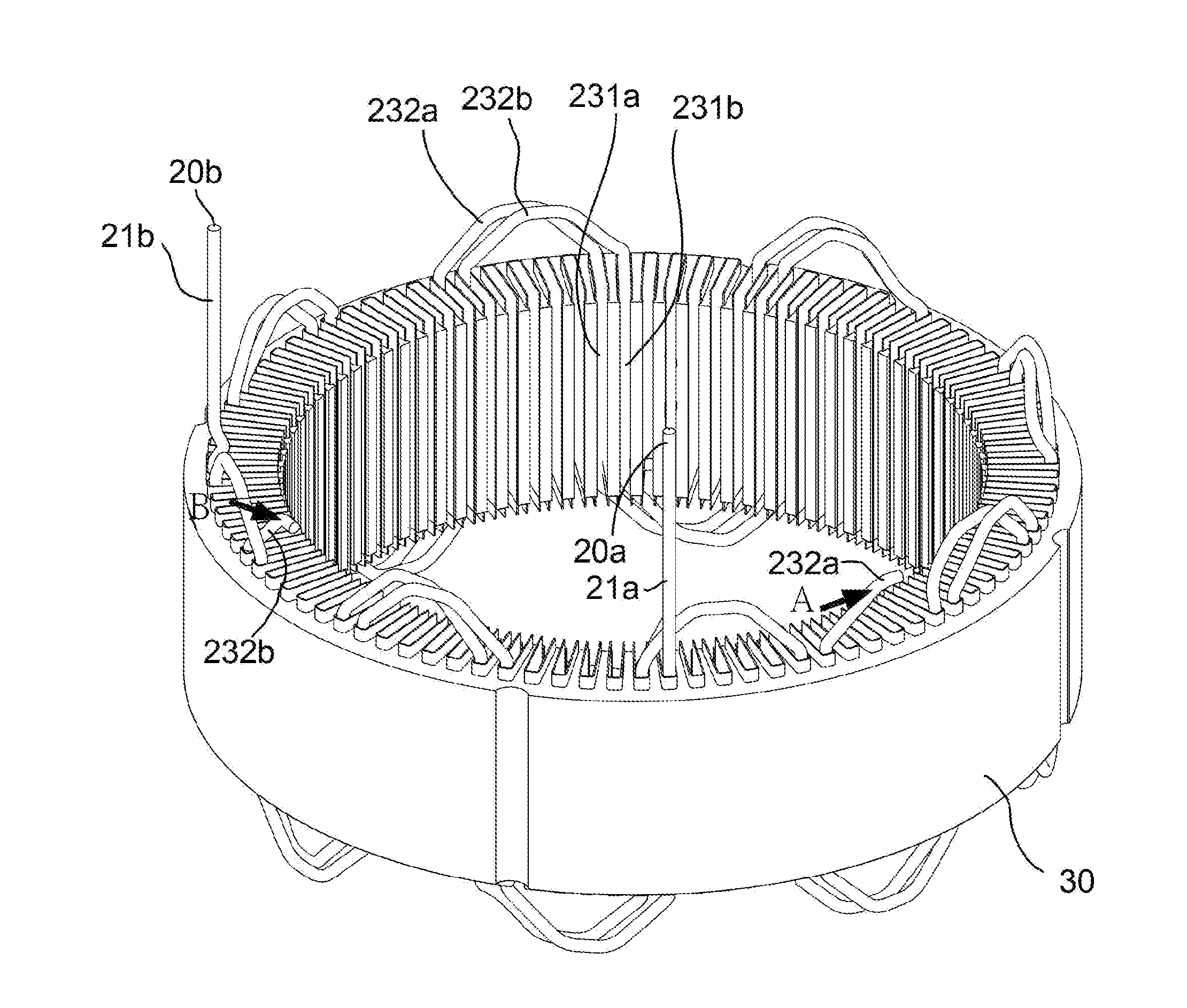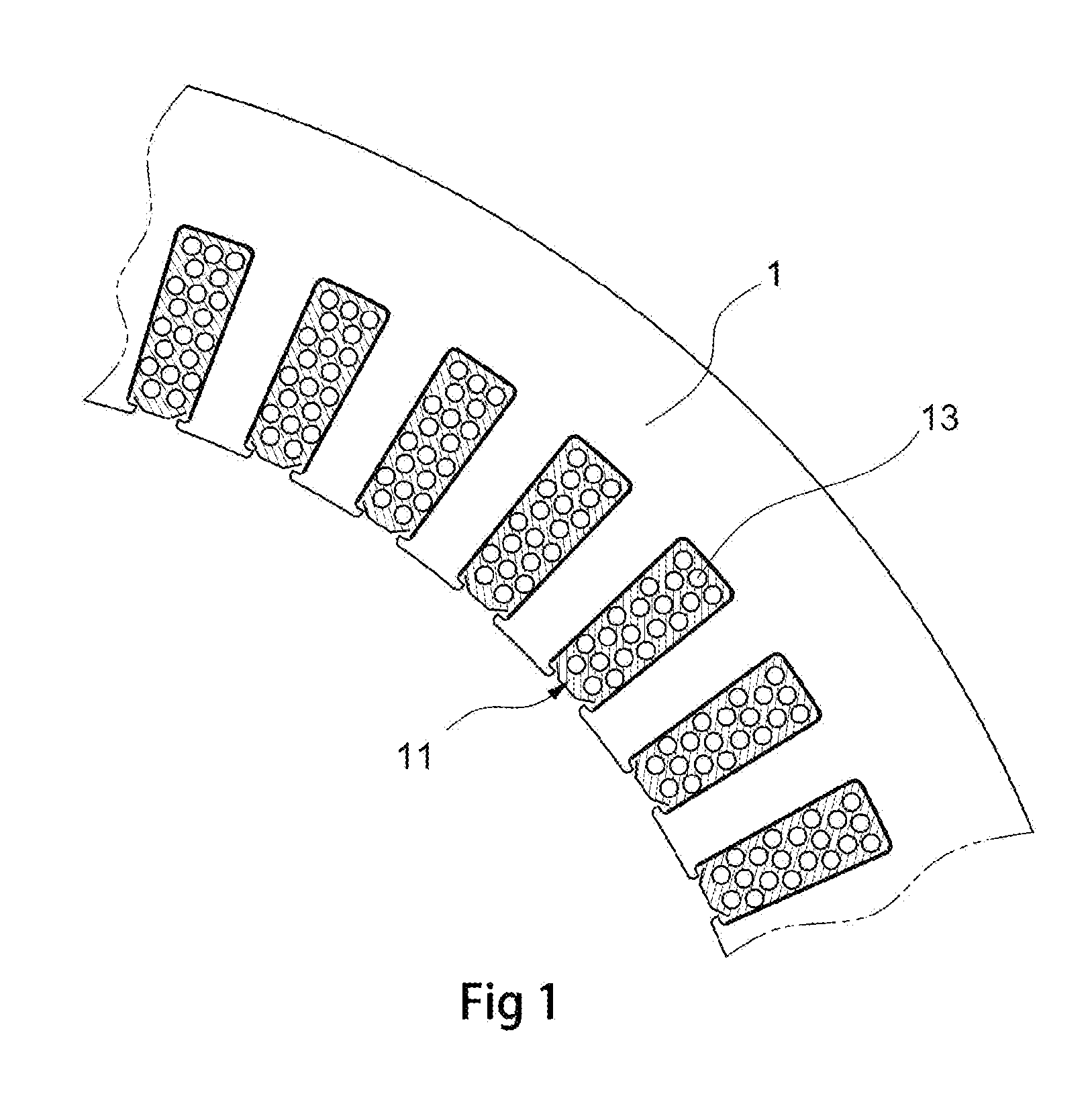Method of Manufacturing Wound Stator for Alternating-Current Generator
a technology of alternating-current generator and wound stator, which is applied in the manufacture of dynamo-electric machines, dynamo-electric machines, electrical equipment, etc., can solve the problems of reducing power generation efficiency, complex winding and folding, and disadvantages of conventional windings
- Summary
- Abstract
- Description
- Claims
- Application Information
AI Technical Summary
Benefits of technology
Problems solved by technology
Method used
Image
Examples
Embodiment Construction
[0032]The characteristics, subject matter, advantages, and effects of the present invention are detailed hereinafter by reference to embodiments of the present invention and the accompanying drawings. It is understood that the drawings referred to in the following description are intended only for purposes of illustration and do not necessarily show the actual proportion and precise arrangement of the embodiments. Therefore, the proportion and arrangement shown in the drawings should not be construed as limiting or restricting the scope of the present invention.
[0033]FIG. 2 is a schematic view of a wire for a stator of a vehicle alternating-current generator according to one embodiment of the present invention. As shown in FIG. 2, a wire 20 includes a first end 21, a second end 22, and a plurality of wave-shaped coils 23 located between the first end 21 and the second end 22, and each wave-shaped coil 23 is formed by a plurality of straight portions 231 and a plurality of curved por...
PUM
 Login to View More
Login to View More Abstract
Description
Claims
Application Information
 Login to View More
Login to View More - R&D
- Intellectual Property
- Life Sciences
- Materials
- Tech Scout
- Unparalleled Data Quality
- Higher Quality Content
- 60% Fewer Hallucinations
Browse by: Latest US Patents, China's latest patents, Technical Efficacy Thesaurus, Application Domain, Technology Topic, Popular Technical Reports.
© 2025 PatSnap. All rights reserved.Legal|Privacy policy|Modern Slavery Act Transparency Statement|Sitemap|About US| Contact US: help@patsnap.com



